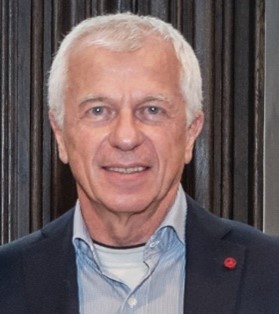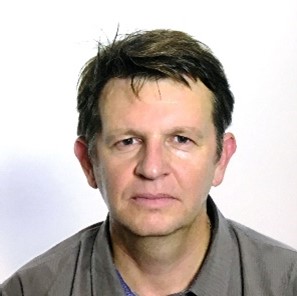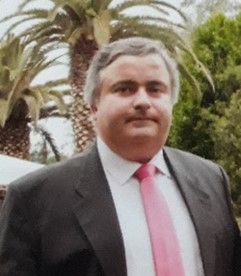Univ.Prof. i.R. Mag. Dr. tech. Dr. h.c. Manfred HUSTY
Talk: Local versus global Kinematics
Abstract: Kinematics is the basis for the analysis, dynamics and synthesis of any kind of robotic mechanical system. In kinematics one can adapt either a local or a global point of view. In a local viewpoint one is interested in the local kinematic behaviour of a mechanism, like the instantaneous pose of the end-effector of a robot, its velocity, acceleration or jerk. One might be also interested in an assembly mode, in a possible singular pose or collision problems. In global kinematics one is interested in the overall behaviour of a mechanism or robot. This means one tries to get information on all assembly modes, on all solutions of direct or inverse kinematics, on all singularities, working or operation modes.
The two different approaches need different methods to answer the above sketched tasks. One has to decide which parameterization of the Euclidean Transformation group SE(3) is best suited for the problem to solve. One has to think of the type of mathematical representation of the mechanism, which can be either parametric or implicit.
The lecture presents a journey through different parametrizations of SE(3), as well as different mathematical representations of mechanical systems and their application to the analysis of serial and parallel robots. In greater detail it will be shown how global kinematic analysis allows to compute all singularities of any kind of serial robot without assigning design parameters and how all working modes and operation modes of parallel robots can be found.
Dr. Damien Chablat
Dr. Chablat has managed and has been involved in numerous research projects, among which: European projects: EnHance, Next Generation of Production Systems, Angels; French National Research Agency Projects: SiRoPa, Raamo, AviNeck, LobbyBot, Ecarp; IRT projects: PIVIPP, FAST, ASPEN, Cobot++, Mascot, Cobolege, and French Companies: Airbus, Tecnomatix, Aldebaran, Thales, Safran, ArmorMeca, Orthopus and CETIM. His areas of excellence are the modelling and innovative design of parallel robots, workspace and singularity analysis, optimal design, stiffness analysis, kinematics, virtual reality, muscle activity, development of manipulative and locomotive robots, dynamic control, and perception.
Dr. Chablat is highly visible on the national level and actively contributes to the international scientific community via his presence in the editorial boards of A-rank journals (IFToMM Mechanism and Machine Theory, ASME Journal of Mechanisms and Robotics).
Damien Chablat has published over 300 papers, with more than 70 in high-ranking journals (Machine and Mechanism Theory, Journal of Mechanisms and Robotics, Journal of Mechanical Design, etc.), out of which 34 papers in Q1, and 15 in Q2. He also has over 7960 citations, and an H-index of 44 (Google Scholar) and 30 (Scopus).
Talk: Assistance Robot for Otological and Sinus Endoscopic Surgery: Advancing Surgical Innovation
Abstract: Endoscopic surgery of the ear and sinuses offers the advantage of minimally invasive pathways and visualization of challenging areas. However, it poses challenges as it immobilizes one hand of the surgeon for endoscope stabilization. As part of Mr. Guillaume Michel's doctoral thesis, an assisting robot was specifically developed for this type of endoscopic surgery under the guidance of Dr. Chablat from LS2N and Professor Bordure from CHU Nantes, with the assistance of Dr. Salunkhe from LS2N.
To conduct this study, a preliminary analysis of the anatomical regions of the ear and sinuses was carried out. A geometric atlas, based on scans, defined the dimensions of robotic workspaces and their variations, guiding the development of specifications for robot design. After reviewing existing robots dedicated to ear and sinus surgery, a new endoscope-carrying robot architecture was proposed, accompanied by functional analysis. Concurrently, a patent watch was conducted before filing a new patent in 2021. A market study was also conducted, revealing the interest of users in the relevant specialties.
An analysis of different architectures aimed at creating a mechanism with a displaced rotation center led to the design of a spherical mechanism with 2 DOFs coupled with a double parallelogram. A new optimization algorithm, based on the Nelder Mead algorithm, was developed to optimize parallel mechanisms. The control modalities of the robot through image tracking were defined using an algorithm employing CamShift, thereby freeing the surgeon's two hands and simplifying endoscope movements.
Dr. José Machado
Talk: A Global Overview on Designing and Using Mechatronic Healthcare Assistive Devices
Abstract: According to the World Health Organization, WHO, there is a significant population sample aged between 65 and 95 years old. Moreover, it claims that the aged world population results from the low birth rate. These facts make elderlies the most vulnerable group, generally with critical clinical conditions. They need a major concern from healthcare services due to their physical and mental limitations.
Nowadays, in developed countries, this kind of healthcare is not limited to the institutional associations/centers. There is an increase on the availability of medical devices that can be used at home, diminishing the constant need for health professional assistance. The main objective of the assistive technology is to protect and take care of fragile elders. There is a permanent demand to improve healthcare, allowing careful and uninterrupted means for the patient mobility. It should be taken into account that the care issues, in domestic environments, are usually performed by family. Mainly, these patients are being cared by one single person/caregiver.
This talk discusses and presents an overview about designing and using Mechatronic Healthcare Assistive Devices focused on being used by a single caregiver and taking into account a large range of the main aspects to be considered in the healthcare, namely medical assistance, mobility, safety, hygiene and comfort. There are presented some solutions and some results already obtained on the design of mechatronic devices successfully developed and oriented for being used by a single caregiver and tested in real-environment.



